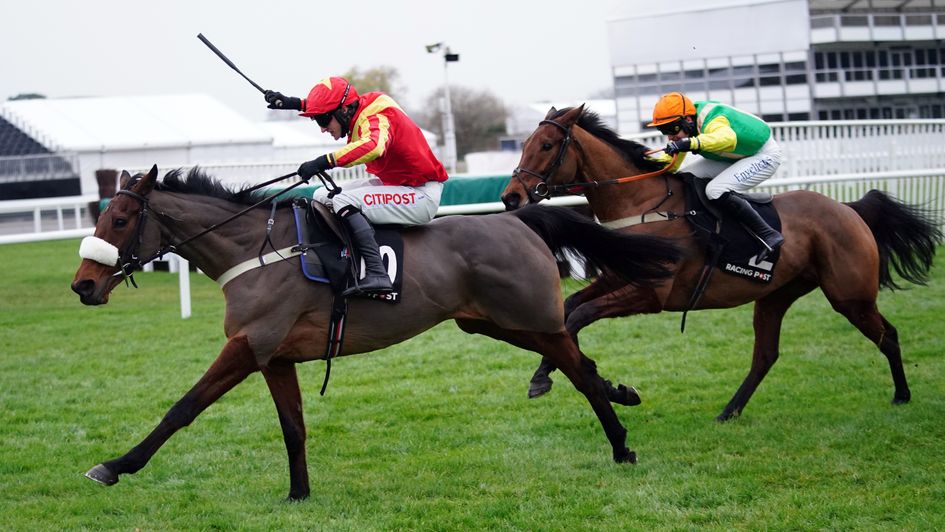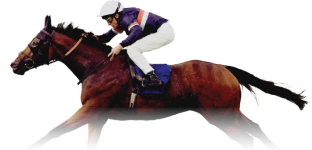Following the International Meeting at Cheltenham, Adam Houghton examines the apparent bias towards front-runners in races over fences on the New Course.
The highest-rated hurdler in Timeform’s history, the trail-blazing Night Nurse proved invincible during the 1975/76 campaign as he went unbeaten in eight races, a sequence which included the first of his two victories in the Champion Hurdle for jockey Paddy Broderick and trainer Peter Easterby.
His exploits that season also prompted the inaugural edition of Chasers & Hurdlers to examine the well-worn cliché that horses were “doing it the hard way” when trying to make all:
"There seems to be a prejudice against making the running with a good horse, or even with a fancied one for that matter.
"Under certain circumstances front-running tactics are highly appropriate – in Night Nurse’s case, the horse is not only perfectly at ease out in front but is such a fluent jumper that he can take lengths off some of the best in the country at his hurdles.
"Why hold him up when he can jump the opposition silly? To do so is to waste one of his main assets."
Admittedly, Night Nurse was the first all-the-way Champion Hurdle winner in 25 years, but Chasers & Hurdlers 1975/76 went on to argue: “Those statistics do not invalidate the argument. Our point is that with the right horse in the right situation front-running tactics do pay.”
Front-running tactics have certainly paid in races over fences on Cheltenham’s New Course in recent years, a topic which was also addressed in the Chasers & Hurdlers series, this time as part of the essay on Simply The Betts in the final ever edition in 2019/20.
It was relevant because Simply The Betts had been successful twice over fences on Cheltenham’s New Course that season, first in the Timeform Novices’ Handicap Chase on Festival Trials Day and then in the Brown Advisory & Merriebelle Stable Plate Handicap Chase at the Festival itself. In both races he disputed the lead from the outset and recorded a Timeform EPF (Early Position Figure) of 1.
- Timeform EPFs range from 1 to 5 and help to explain where a horse was positioned during a race. An EPF of 1 is recorded by a horse who led and an EPF of 5 is recorded by a horse who was held up.
Of course, one horse winning two races from the front is not sufficient evidence to suggest there is a bias in play, but the essay on Simply The Betts went on to examine a far larger sample size to underline that horses who need to be waited with have been at a disadvantage over fences on the New Course in recent years:
“Those racing prominently have won 55% of the chases staged on professional cards (excluding Gold Cup day) run on the New Course over the past five seasons, compared to a national average of around 20% for the same period.
“The Cheltenham statistic rises to 68% if judged on the last two seasons, whilst it rises to 73% just for handicaps over that shorter time – which suggests jockeys are cottoning on to the trend.”
Recent evidence is equally compelling
Another nine individual days of National Hunt racing have been staged on the New Course since that essay was written – it should have been 11 but the New Year’s Day and Festival Trials Day fixtures were both abandoned last season – and the trend shows no signs of slowing down.
Across the eight cards involving professional jockeys during that period – Cheltenham’s New Course also play hosts to a hunter chase card restricted to amateur riders in late-April – 26 races have been run over fences, 17 of which have been won by horses who recorded an EPF of 1 (led) or 2 (raced prominently). That equates to a share of around 65%, with front-runners (10/26) making up 38% of winners and horses who raced prominently (7/26) making up another 27%.
The International Meeting was the first fixture at Cheltenham this season to be staged on the New Course, featuring three races over fences on Friday and the same again on Saturday. Out of those six races, four of the winners recorded an EPF of 1 or 2 – Commodore, Editeur du Gite and Coole Cody all made the running to win handicaps featuring at least eight runners, while My Drogo got an early lead from Torn And Frayed in Saturday’s novice chase before taking it up at the eighth.

Unlimited Replays
of all UK and Irish races with our Race Replays
Discover Sporting Life Plus Benefits

Of course, in some of those instances a supposed bias can be partly explained. My Drogo, for example, was always likely to be a class apart, underlined by an SP of 9/2-on, while the Racing Post Gold Cup won by Coole Cody hardly went against script, panning out very similarly to the Paddy Power Gold Cup run on the Old Course four weeks earlier.
Coole Cody and Midnight Shadow dominated pretty much from the start on that occasion, pulling around 10 lengths clear of the rest and looking all but guaranteed to fill the first two places when Coole Cody fell at the second last. That left Midnight Shadow clear at the head of affairs and, although tiring on the run-in, he was always doing enough to win by three quarters of a length.
As for Saturday, Coole Cody and Midnight Shadow once again approached the second last locked in combat, but this time it was Midnight Shadow who made the mistake, leaving his old rival with an advantage he never really looked like conceding. Midnight Shadow managed to stay on his feet but couldn’t hold off the late thrust of Zanza, who fared best of those held up in getting up for second.
The fourth Fusil Raffles was also prominent from the outset, a far from uncommon situation in which all bar one of the principals recorded an EPF of 1 or 2. The first four pulled over eight lengths clear of the rest and most experienced race-readers would conclude that the patiently-ridden runners weren’t seen to best effect, with the effort of Zanza perhaps worth marking up under the circumstances.
Why are patiently-ridden horses at such a disadvantage?
The set-up of the track for the various racedays leading up to, during and after the Cheltenham Festival offers a plausible explanation, with officials at Cheltenham having a long-standing policy of preserving a fresh strip of ground for the final day of the Festival, dolling off that inner portion of track for the remainder of its fixtures in the year.
This narrowing of the chase course causes a clear shift towards prominent racers holding an inherent edge. A tighter track allows the pacesetters to conserve energy when otherwise they might not have been able. It also gives horses who are held up less room to manoeuvre as they pick their way through, whether that be negotiating fallers or horses who are weakening.
Safety limits for chases on the New Course are presumably arrived at on the assumption that the full width of the track is being used. The field of 13 that went to post for the Racing Post Gold Cup was the largest over fences at the International Meeting, but the Thursday of the Festival (the first two days are held on the Old Course) regularly features two maximum-field handicap chases, so it is easy to see how narrowing the approach to each obstacle could affect the shape of a race.
Staging chasing’s blue riband event on the best possible ground is an understandable aspiration, but is Cheltenham short-changing horses, their connections and punters at the rest of its meetings?
More from Sporting Life
- Racecards
- Fast results
- Full results and free video replays
- Horse racing news
- Horse racing tips
- Horse racing features
- Download our free iOS and Android app
- Football and other sports tips
- Podcasts and video content
Safer gambling
We are committed in our support of safer gambling. Recommended bets are advised to over-18s and we strongly encourage readers to wager only what they can afford to lose.If you are concerned about your gambling, please call the National Gambling Helpline / GamCare on 0808 8020 133. Further support and information can be found at begambleaware.org and gamblingtherapy.org.









